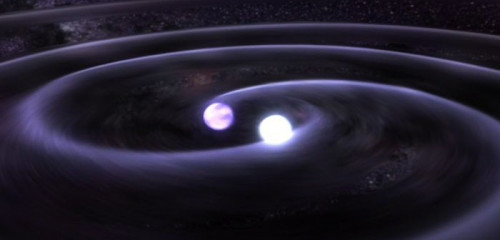
Caught in the act: has LIGO–Virgo detected merging neutron stars? (Courtesy: NASA)
By Hamish Johnston
Have gravitational waves from merging neutron stars been detected for the first time?
Physicists working on the LIGO and Virgo gravitational-wave detectors have issued a statement that appears to be a response to rumours that both gravitational waves and electromagnetic radiation from an astronomical event have been detected.
LIGO has already detected gravitational waves from three different binary black-hole mergers. But none of these events appeared to emit electromagnetic radiation that could be detected by astronomers using telescopes on Earth or in space.
A neutron star merger, however, is expected to give off significant amounts of light and some people not involved with LIGO–Virgo have said that both light and gravitational waves from such an event have been detected. If so, this would be the first “multi-messenger” observation involving gravitational waves.
The LIGO–Virgo statement neither confirms nor denies the rumour, but does hint at a multi-messenger discovery: “Some promising gravitational-wave candidates have been identified in data from both LIGO and Virgo during our preliminary analysis, and we have shared what we currently know with astronomical observing partners.” The collaboration adds: “We are working hard to assure that the candidates are valid gravitational-wave events, and it will require time to establish the level of confidence needed to bring any results to the scientific community and the greater public.”
Guidelines
Show/hide formatting guidelines
this text was deletedwhere people live in harmony with nature and animals</q>
Some text